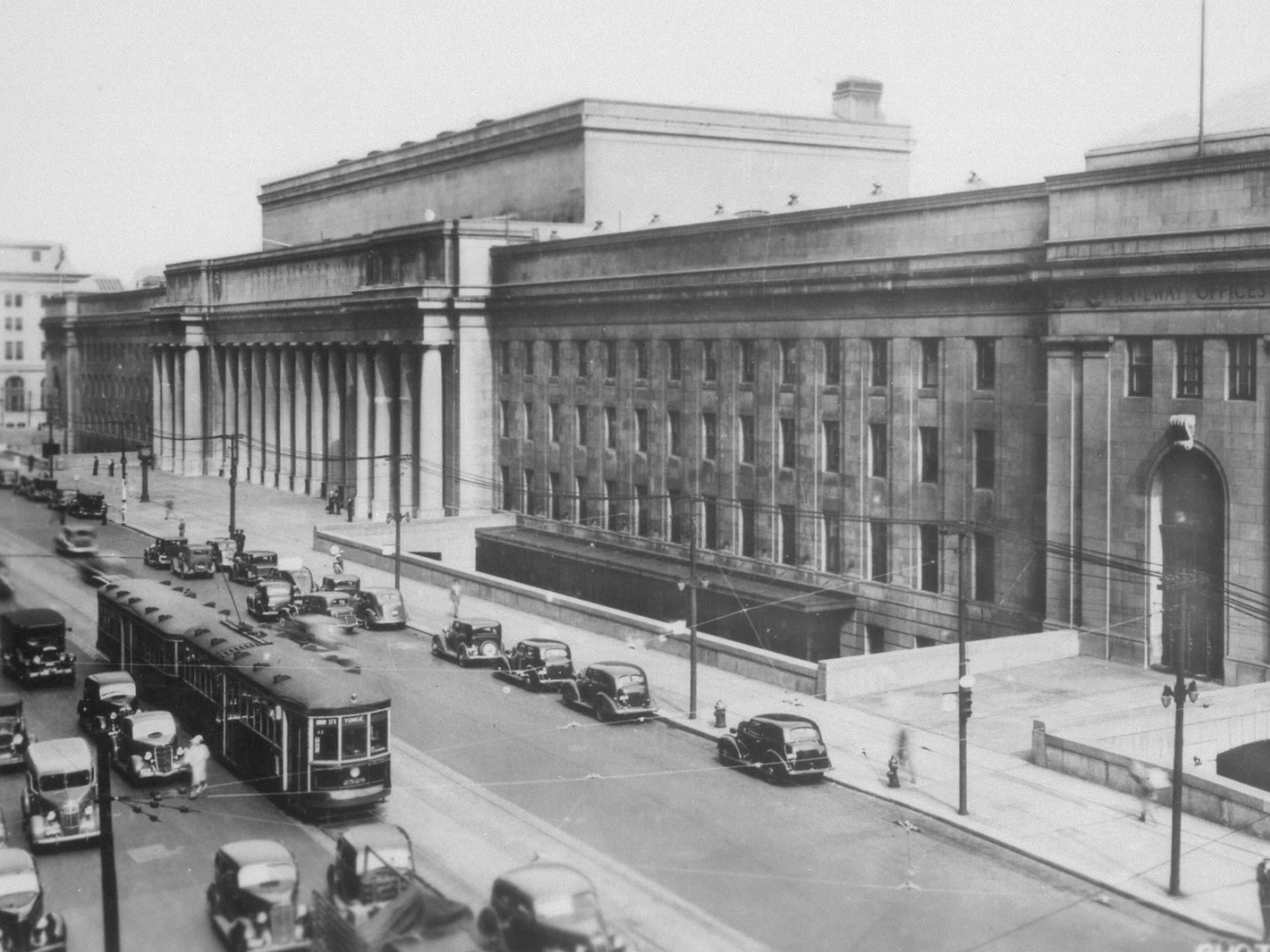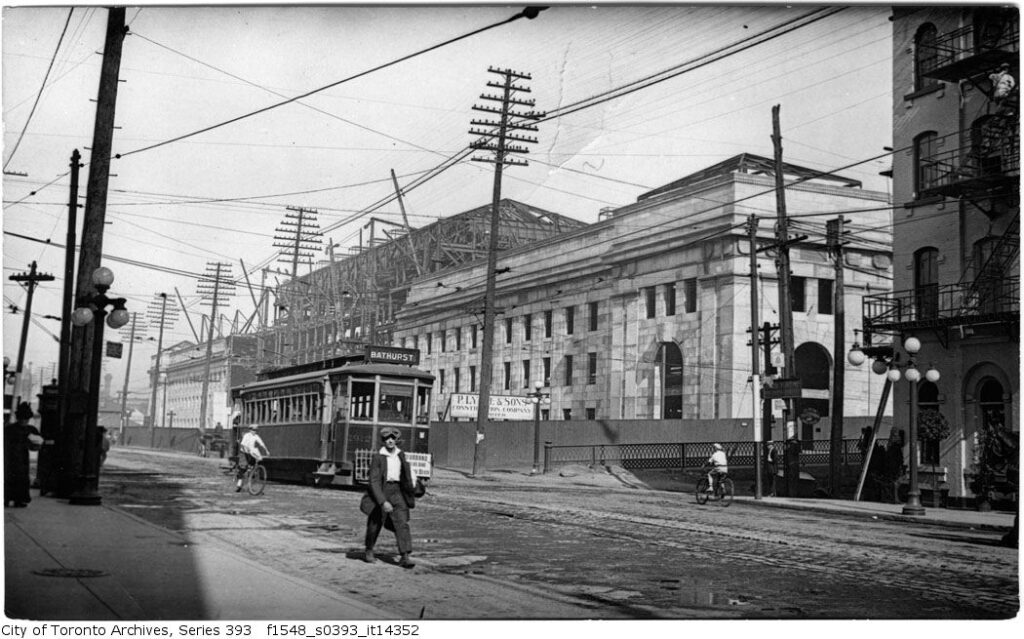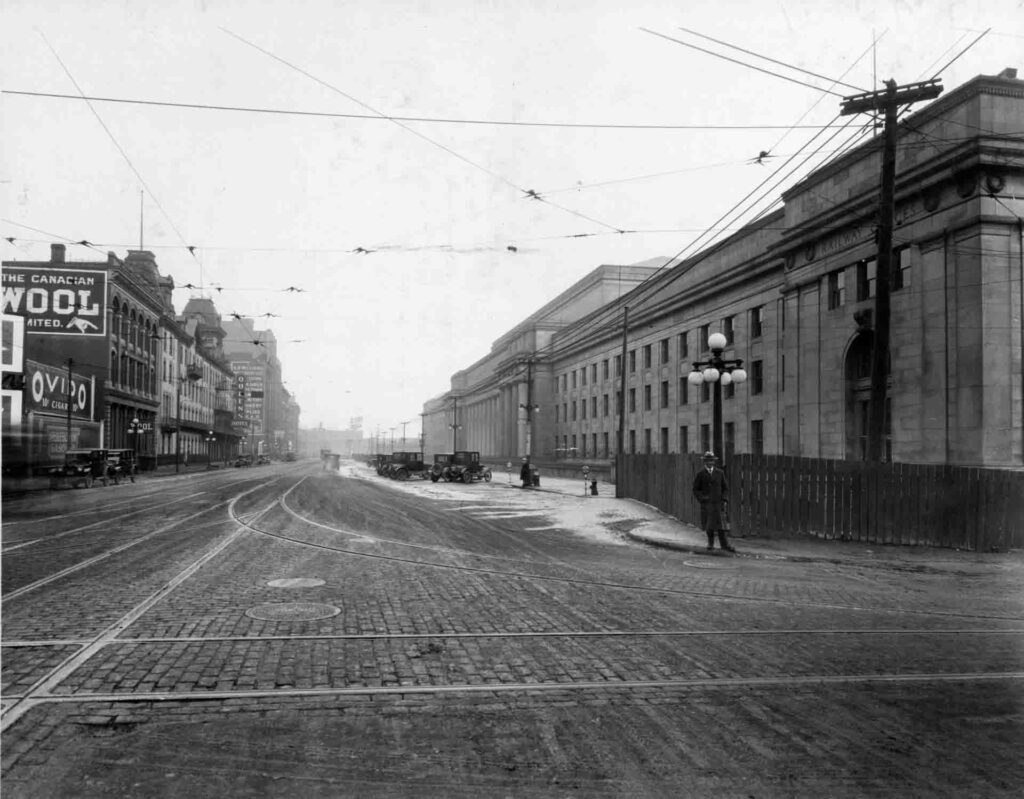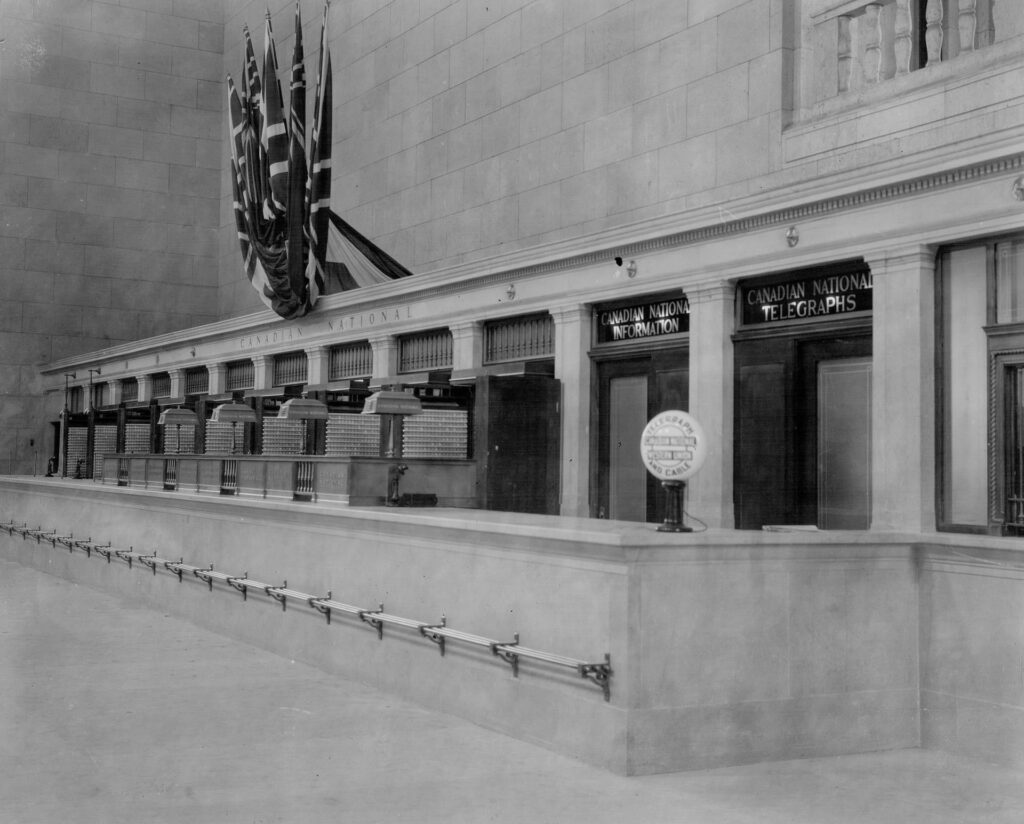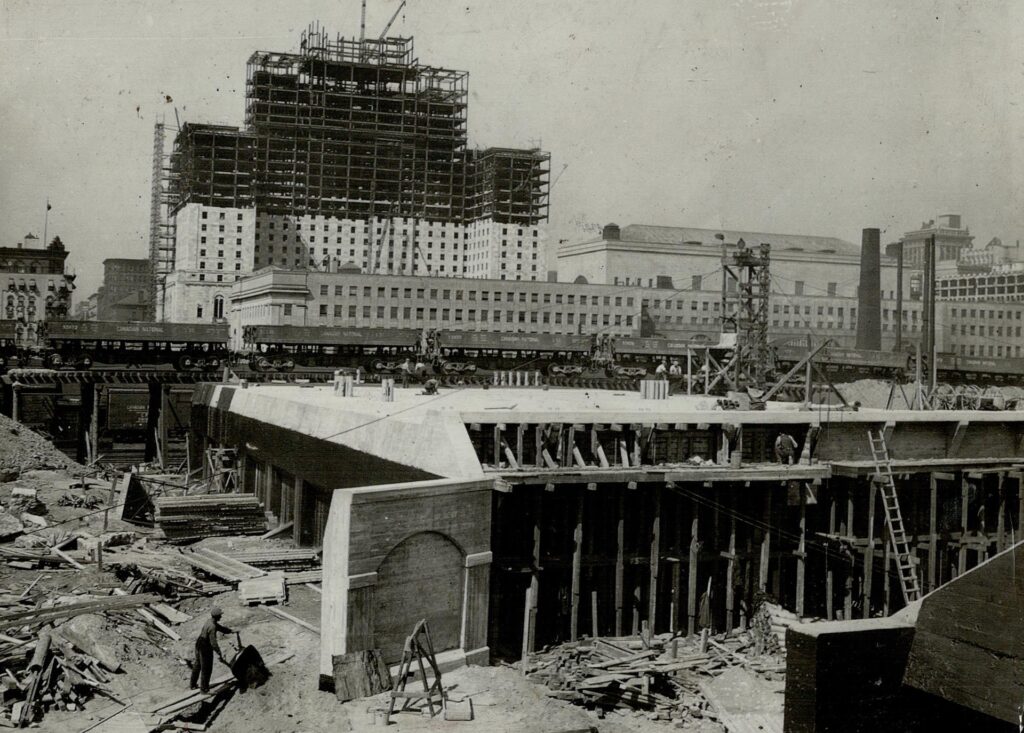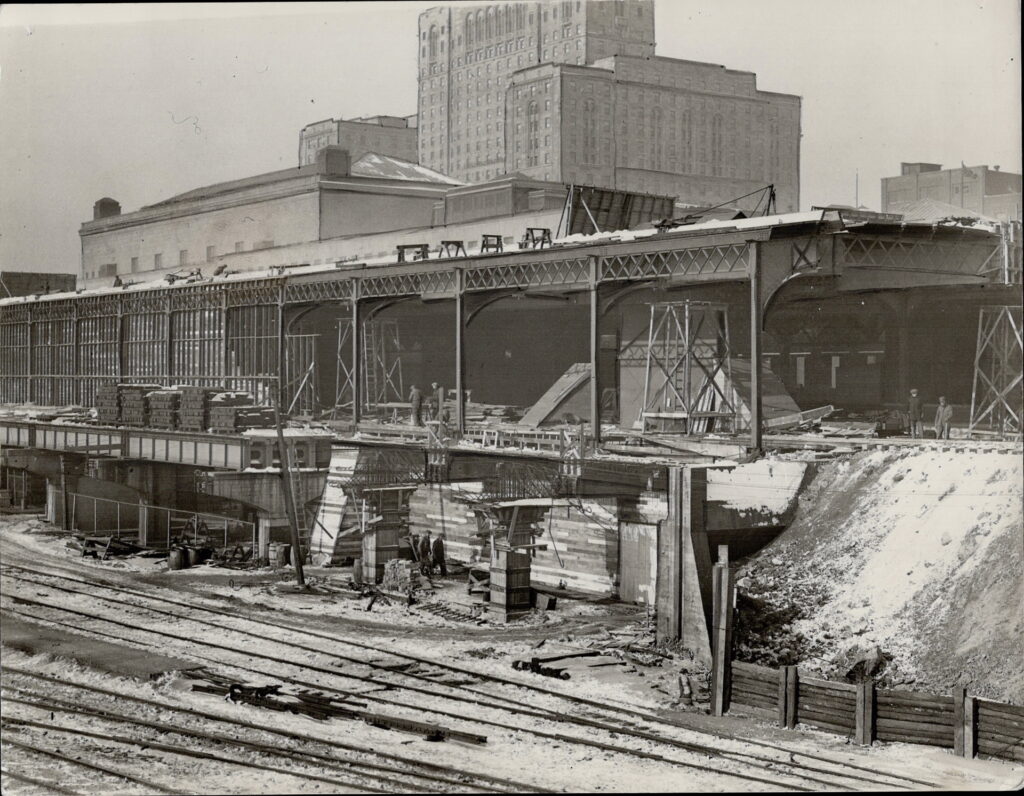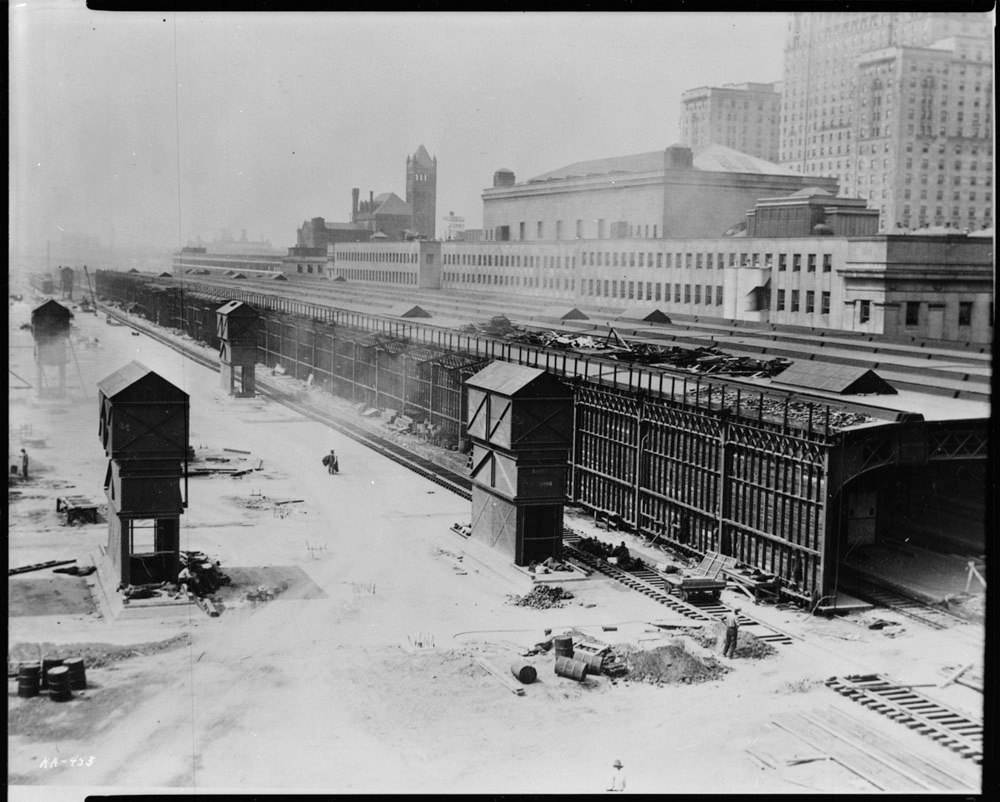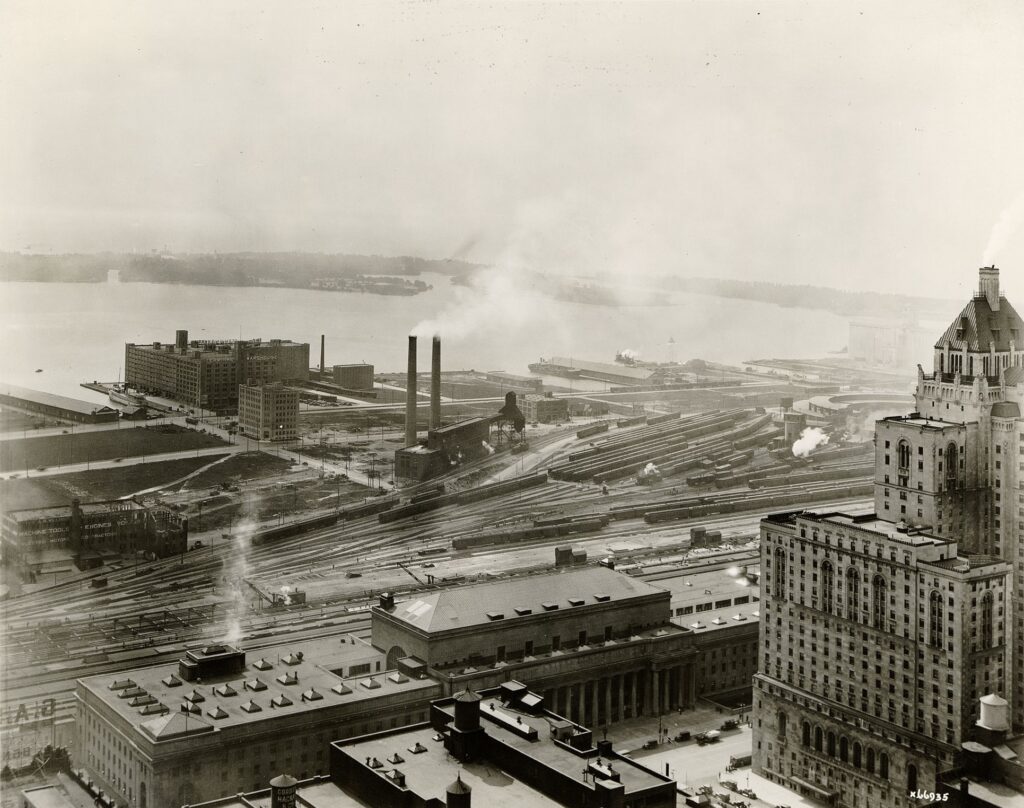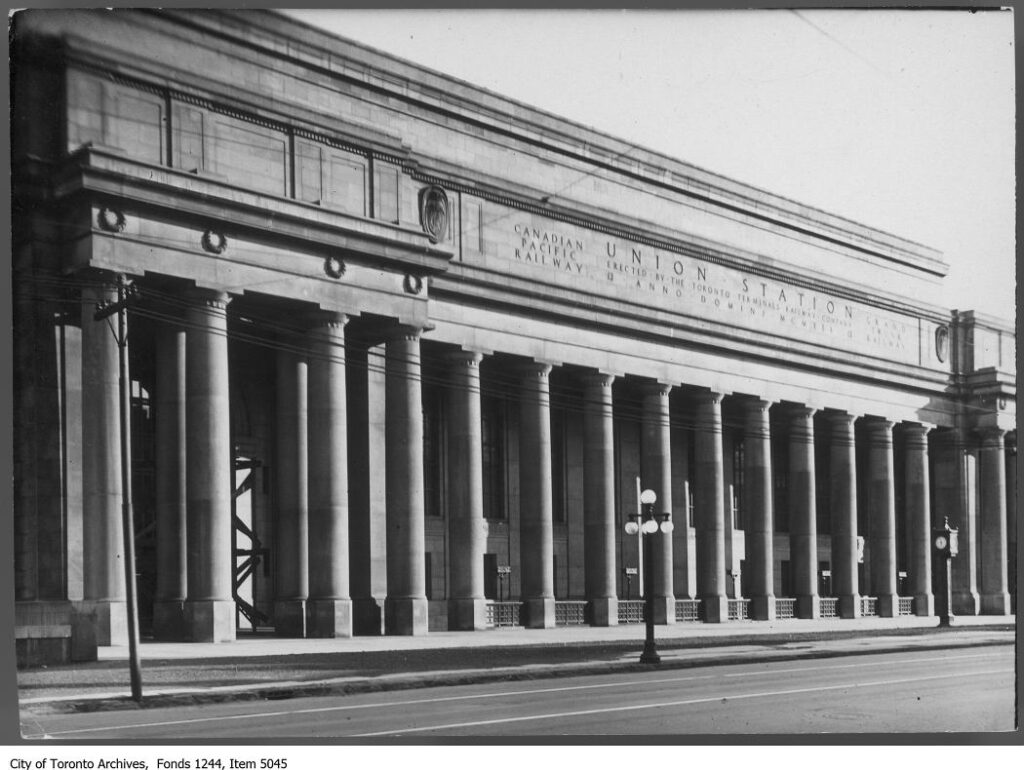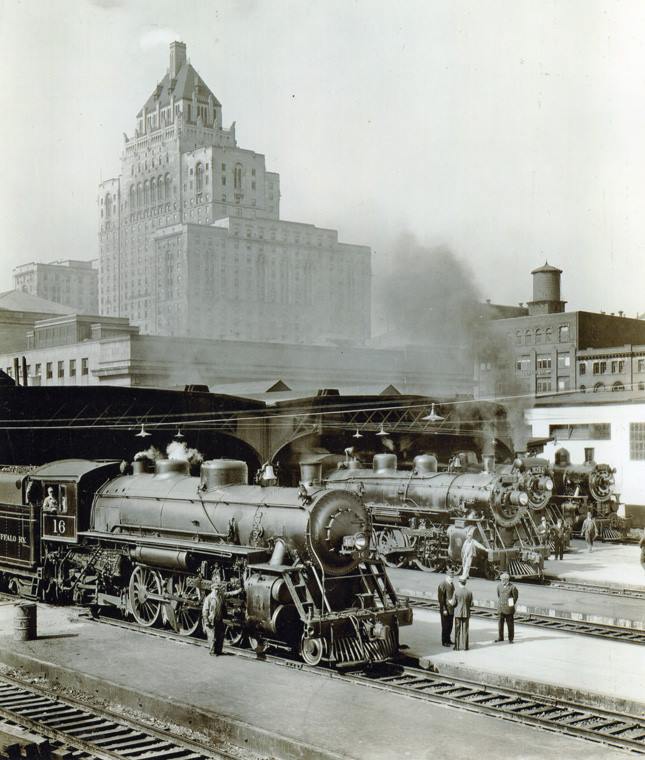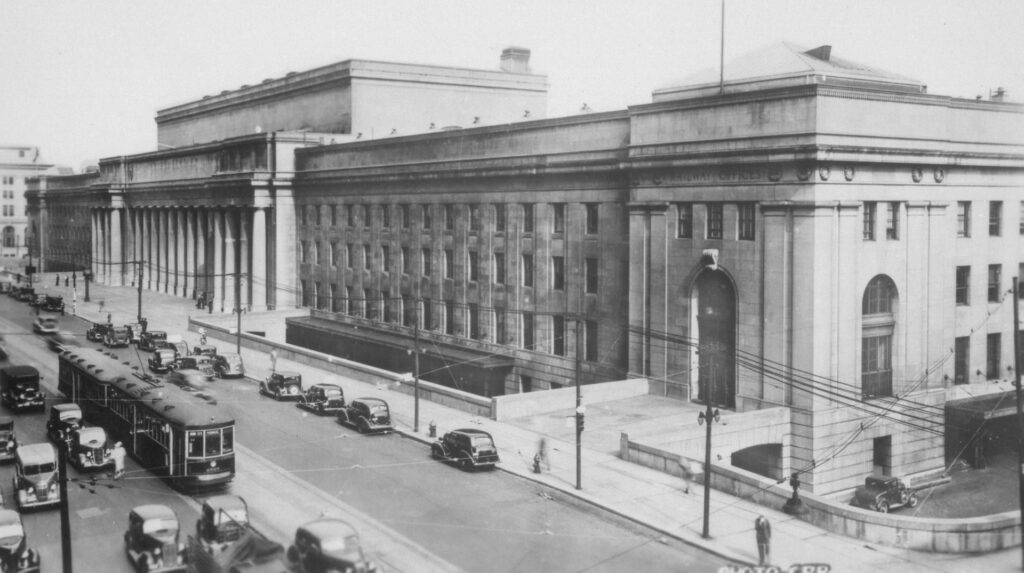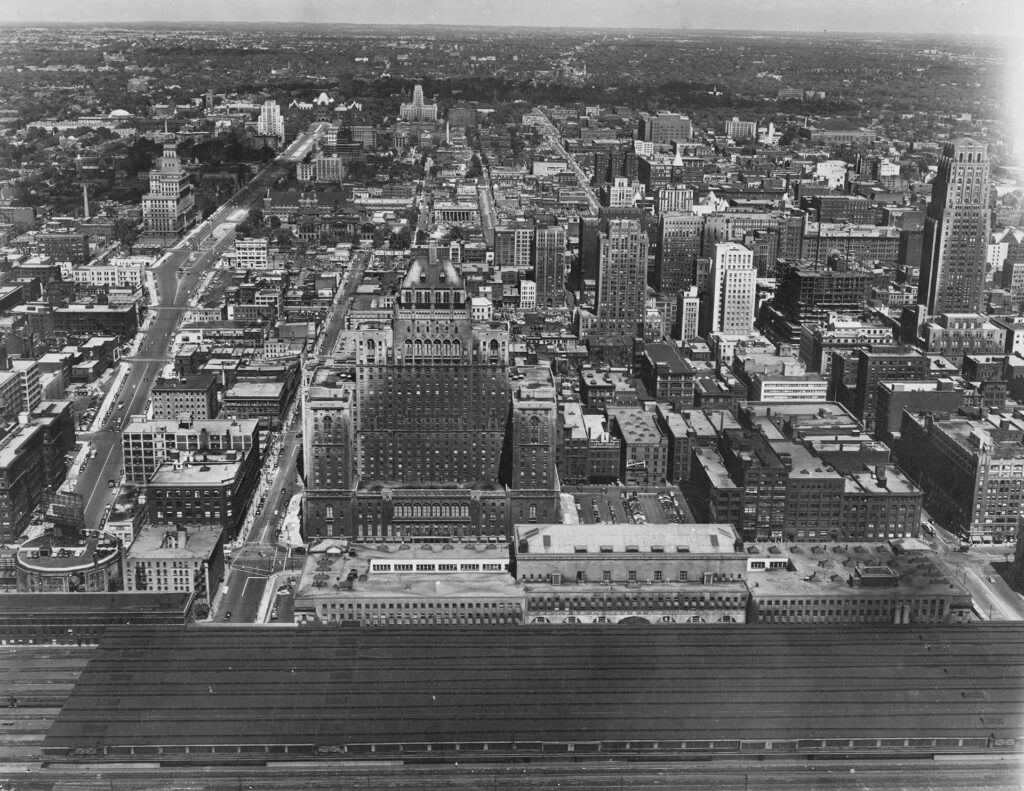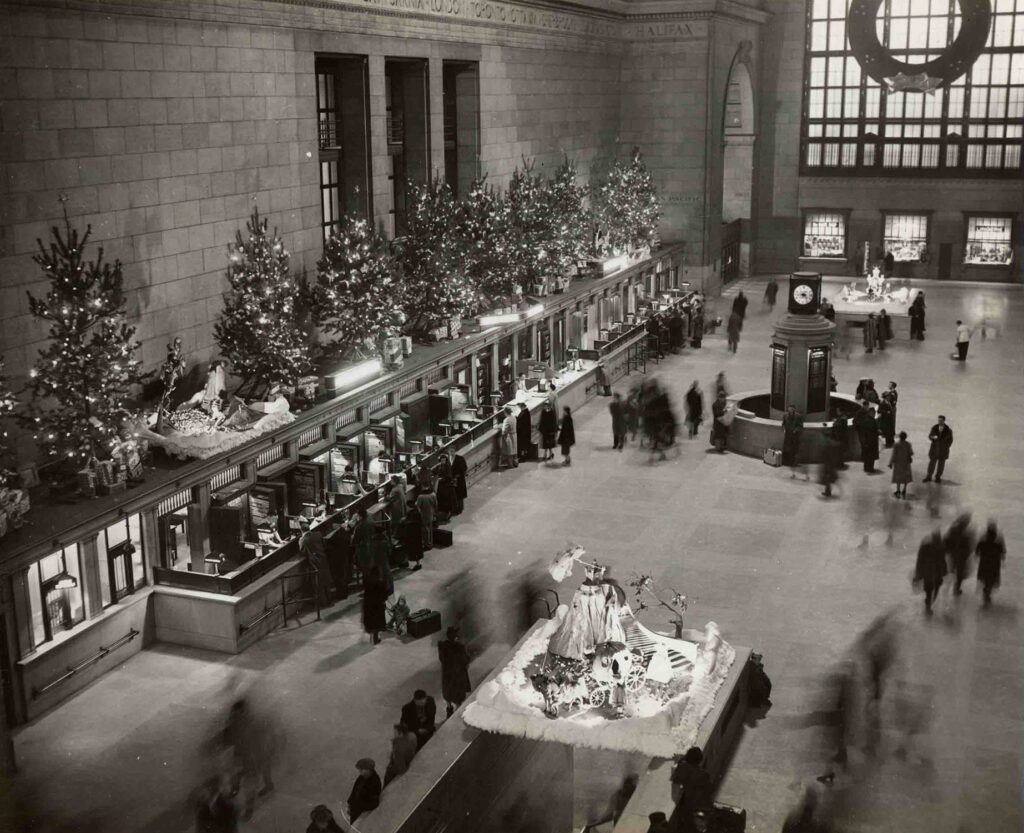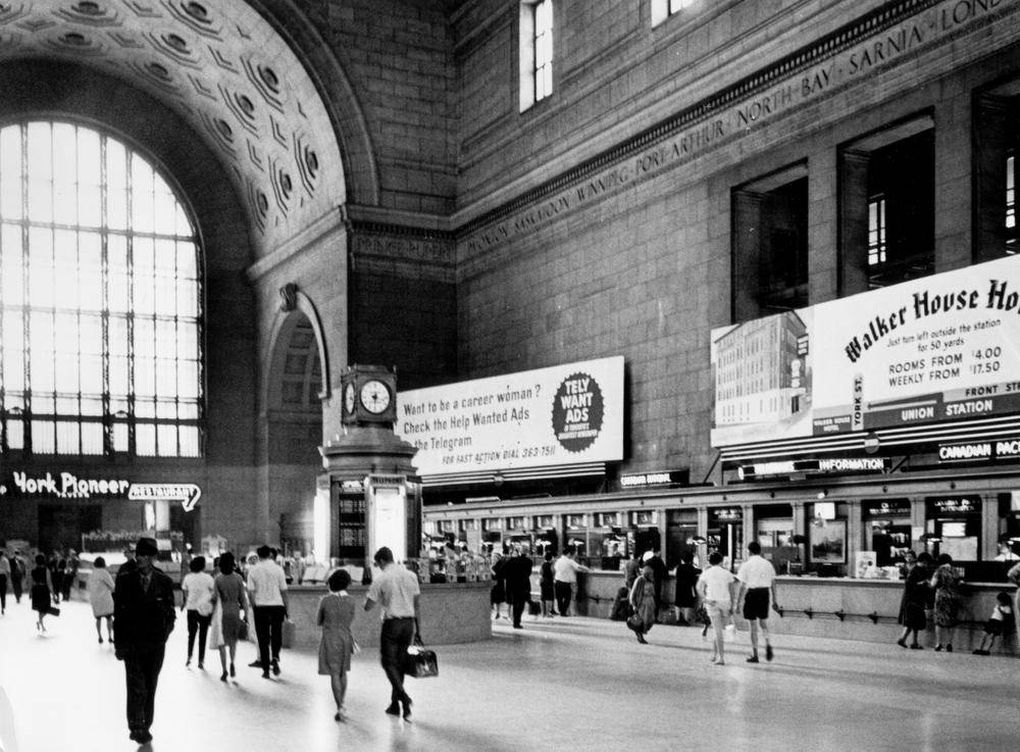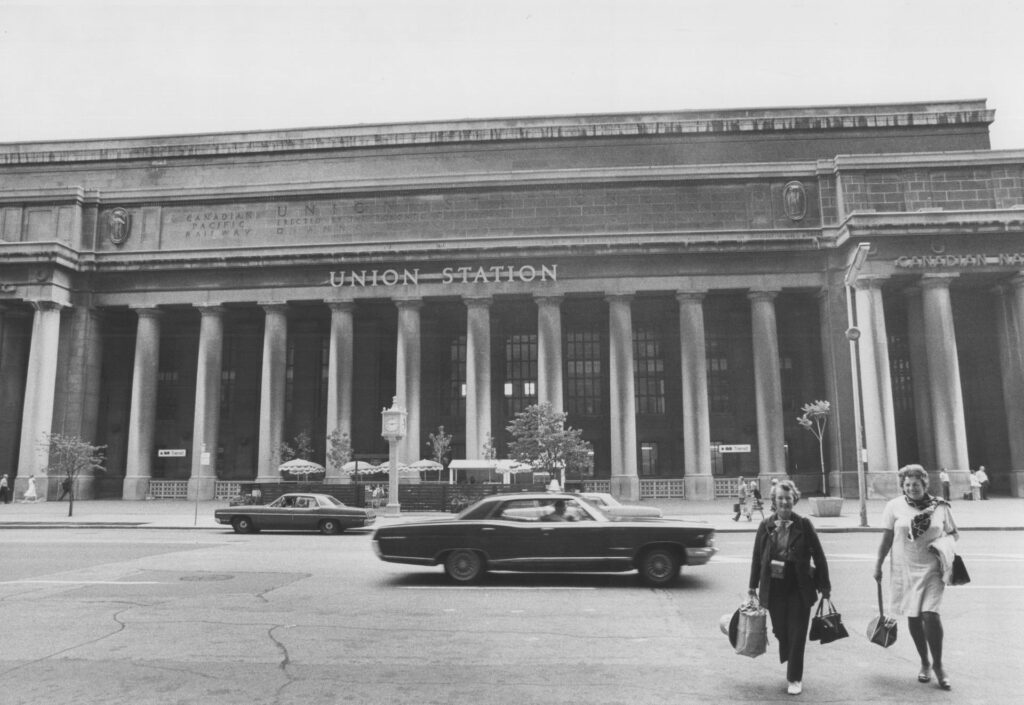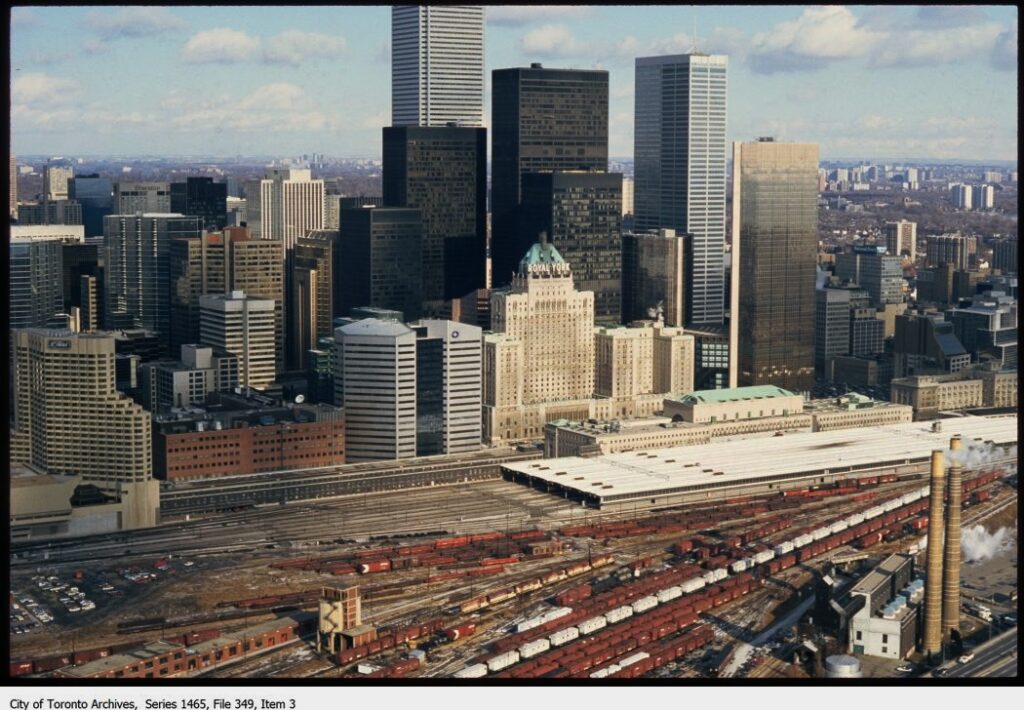Despite the best efforts of the railway companies behind its construction, the design of Toronto’s second Union Station was fundamentally flawed and could not adequately handle the number of people using it on a daily basis. Even its 1896 expansion did not mitigate these issues for very long, and both the railways and city officials began looking for a more permanent remedy. Luckily for them – unluckily for others – multiple city blocks immediately to the east of Union Station were destroyed in the Great Fire of 1904. This opened the much-needed real estate for a new Union Station, and the land was expropriated by the Grand Trunk Railway later the same year. The Canadian Northern Railway had eyed this land for its own passenger terminal but was unsuccessful in securing it. They would instead turn their attention towards North Toronto for this purpose, and as such would stay largely uninvolved in the construction of the new Union Station.
The Toronto Terminals Railway Company was formed on July 13th, 1906, with the purpose of constructing, maintaining, and operating the new Union Station. Its shares were owned in equal part by the Grand Trunk Railway and Canadian Pacific Railway who both intended to serve the station. The contract for its construction was awarded jointly by both the Canadian Pacific and Grand Trunk to the Westinghouse, Church & Kerr Company of New York in March of the same year. The contract included both the erection of the station and signaling devices in the surrounding corridor. The total cost was reported to be about $1,000,000 and it was expected to be completed by February 1908, though a variety of delays and planning changes would greatly slow down progress. Plans were submitted to the railway authorities soon afterward but little to no work was completed over the next several years, except for the removal of debris on the new Union Station site in the summer of 1912. The business relationship between Westinghouse, Church, Kerr & Company and the Grand Trunk Railway ended when the former sued the latter for a million dollars, citing breach of contract. A new contract was established with Peter Lyall & Son of Montreal two years later on July 7th, 1914. Another massive delay would come in the form of World War One which Canada would become involved in just one month later. The war effort would divert much of the materials and labour force needed to build the station in a timely manner.
The new Union Station’s headhouse had finally reached a finished state in 1918, though much work was still needed. Its design followed the Beaux-Arts architecture style which was exceedingly popular for major railway terminals across North America at the time. The exterior is made almost entirely from a beige limestone, including a colonnade at its grand entrance comprising of 22 doric columns. Upon entering, passengers would be greeted with a “Great Hall” measuring 79 metres long with an arched ceiling 26 metres overhead. Zumbro stone was brought in from Minnesota for the interior walls, chosen for its light-reflecting qualities. Tennessee marble was used in the floors and stairways. The Great Hall is considered by many architectural historians to be one of the finest public rooms in Canada. In 1919, stone carvers engraved the walls inside the Great Hall with the names of all the important cities in Canada connected to Toronto by passenger train. The exterior façade along Front Street was also engraved with the names of the Grand Trunk Railway, Canadian Pacific Railway, and the Toronto Terminals Railway. The post office and railway offices began occupying the east and west wings respectively in 1920, but the rest of the station remained unused. There was still debate over how to handle grade separation of the rail corridor, and the platforms could not be completed until the final elevation of the tracks was determined.
The Grand Trunk encountered financial difficulties through the early 20th century, culminating in its nationalization and subsequent absorption into the newly-formed Canadian National Railway in 1923. The Grand Trunk’s shares in the Toronto Terminals Railway went to Canadian National, and by 1924 a decision was made to raise the rail corridor above the roads from the new station east to Coxwell Avenue. Construction on the new rail corridor and station platforms commenced in 1925. The new Union Station was officially opened by King Edward VIII on August 6th, 1927, though temporary platforms had to be used by passengers at the site of the old Union Station. Tracks 1 through 6 of the station and the northern half of the rail corridor were finally opened for traffic on January 21st, 1930, and the remainder was finished by December of that year. Unfortunately, the Great Depression was ongoing for over a year by this point and it had already negatively affected passenger ridership. The Bush-style trainshed of the new Union Station was originally to be given skylights but these were scrapped due to budgetary concerns. In 1933, an agreement was made between Canadian Pacific and Canadian National to pool their trains between Toronto and Montreal for efficiency. This agreement remained in effect until 1965.
Ridership rebounded with the second world war, and by the postwar period Union Station saw upwards of 90-100 trains per day. However, this rebound was short lived as the popularization of automobiles and air travel began to take their toll on passenger ridership. Automobile travel within the city was made more convenient often at the cost of other forms of transportation, incentivizing commuters and other travelers to avoid the train altogether. The streetcar tracks on Front Street were removed around this time to make way for more lanes, marking the end of an important transit connection with Union Station. Shortly after the infamous demolition of New York City’s Old Penn Station in 1963, Union Station soon found itself in the crosshairs. Numerous media outlets wrote negatively of the station during this period, predicting or advocating for its removal and replacement in a similar manner to Penn Station. A proposal was made to replace the headhouse and trainshed with a vast “Metro Centre”, following the example of New York City in replacing the headhouse of old Penn Station with Madison Square Garden. Railway officials were favourable to this idea, and it was only through advocacy groups and their support from Mayor David Crombie that these plans were averted. Union Station was declared a National Historic Site of Canada in 1975 which protected it from future demolition. Plans for the Metro Centre were scaled back, and some elements such as the CN Tower and Metro Convention Centre were built elsewhere.
To partially supplant the waning commuter service offered by Canadian National and stave off traffic congestion on Highway 401, the province formed GO Transit in 1967 to run commuter trains between Pickering, Union Station, and Oakville. Its purview was gradually expanded over the next several decades, including lines to Kitchener, Barrie, and Richmond Hill. In all cases it supplanted the service previously offered by other companies or transportation agencies over those routes. Canadian National spun off its regional and long-distance passenger service as a separate crown corporation called VIA Rail in 1977. It assumed all of Canadian Pacific’s remaining passenger service in 1978. Direct rail service from Union Station to the United States was jointly revived by VIA and Amtrak in 1981, and streetcar service returned to Union Station in 1990 through the use of an underground tunnel. In 2000, the City of Toronto purchased the Union Station headhouse, while Metrolinx purchased the train shed and the rail corridor.
Passenger ridership at Union Station has gradually increased over the past several decades. This can be partially attributed to increasing traffic congestion making commuter rail the more viable option for many, as well as the densification of downtown Toronto and improved transit connectivity. The interior of the station was greatly renovated and revitalized between 2005 and 2021, involving the opening of a new concourse and the preservation of Beaux-Arts elements in the existing concourses. At present, over 50% of VIA Rail’s passengers and 91% of GO Transit’s passengers pass through Union Station. Its newfound importance in the 21st Century has renewed Union Station’s purpose as Toronto’s central transit hub.
Condensed Station Info:
| Location: | Served By: | Current State: | Date Built: | Date Demolished: |
| Front Street at Bay Street | Canadian National (1927 – 1977) Canadian Pacific (1927- 1978) GO Transit (1967 – Present) VIA Rail (1977 – Present) Amtrak (1981 – Present) | Preserved | 1927 | N/A |


